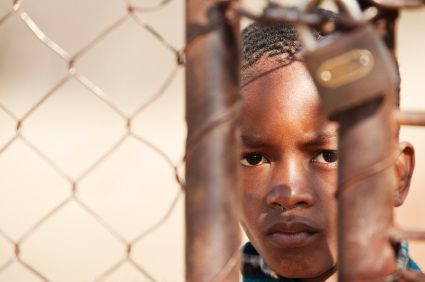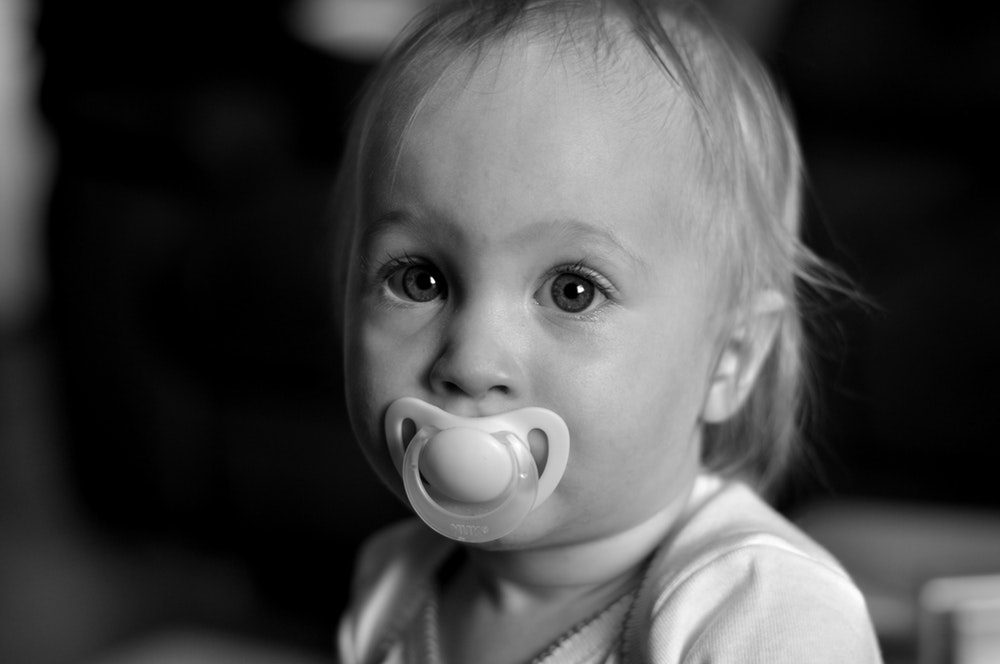 I love gadgets, but I admit that they’re intimidating sometimes. The purpose of a great gadget is to be easy to use and to make your life simpler and more streamlined. Modern mums have to be tech-friendly to a certain degree, especially hip mums like us, right? Besides the essentials (smartphone or PDA, iPod/MP3 player, laptop or tablet computer), check out these mom-centric gadgets that will make your life a lot easier…plus they’re a lot of fun!
I love gadgets, but I admit that they’re intimidating sometimes. The purpose of a great gadget is to be easy to use and to make your life simpler and more streamlined. Modern mums have to be tech-friendly to a certain degree, especially hip mums like us, right? Besides the essentials (smartphone or PDA, iPod/MP3 player, laptop or tablet computer), check out these mom-centric gadgets that will make your life a lot easier…plus they’re a lot of fun!
Most parents must wage the “great battle of the binky” eventually, although many of them dread the prospect. Pacifier use is something that is a lot like politics: everyone has an opinion, but not everyone shares it. Some parents refuse to give their baby a pacifier. Others offer the pacifier to their baby as soon as they can. Yet others, in despair of ever sleeping again, try to get their child to use a pacifier, and it does not work for some reason, because the baby won’t take it. For those parents whose children grabbed onto their pacy and soon found it to be as indispensable as their diaper or their bottle, there is hope. That battle can be won—it just takes some patience, ingenuity and, sometimes, some subterfuge. So how do I wean my toddler off of the pacifier?
Pacifiers aren’t “evil,” despite what the anti-binky purists say. Most kids will leave their pacifier behind on their own after a while, and those kids that use them don’t have long-term effects from having used them for a long time. Sure, there are some studies which link slightly delayed speech or self-soothing habits to pacifier use, but it isn’t as if the child were bungee jumping or swimming with sharks. However, when your child has pitched a major tantrum in a very public place because they left their binky at home, you will want to end that dependency, as much for your sanity as theirs. Here are some tactics that have had success. Remember that every child is different, so there is no “magic bullet” to this pesky problem.
1. Go cold turkey. This option requires some serious mental and emotional fortitude on the parent’s part, because it can be as traumatic to them as it is to the child. This tactic works best on children with a milder temperament who aren’t as fixated on their pacifier. Some parents “lose” it, others simply take it away and deal with the consequences. Be prepared for some hard-core crying, but since children of this age group have short attention spans and get past things quickly, it might be a viable option for you.
2. Build up to it gradually. This one takes some strategy, but it is accepted as the “best” method by childhood development and psychologists. Start out by pointing out “big kids” to your child while at the playground or the store that aren’t using a pacifier. Set a date in the future for giving up the binky: make a calendar, check off the days with star stickers, and on the big day have them throw it away, with or without a nice reward (some parents think that’s bribery…but it does work sometimes…). Or, invest in a book like The Binky Ba-Ba Fairy, by Heather Knickerbocker-Silva, where a fairy takes children’s pacifiers and give them to younger children in need, and let them feel good about themselves for helping others and being a big boy or girl. None of these methods will stop the child from having some residual pining for the pacifier at certain times, but these esteem-building experiences give something to the child instead of simply taking them away.
3. Interference methods. These are somewhat controversial, but none of them is abusive in any way. These are “old-timey” methods that our moms and grandma’s used before…and they do work. These methods work by interfering in the child’s ability to enjoy their binky. Some moms swear by dipping the pacifier into a cup of strong-brewed coffee or in lemon juice, giving it a bad taste. Some moms will cut a little nick into the “nipple” portion, which changes the pacifier’s smooth texture and makes it harder to suck on.
4. Let the child decide. As stated before, every child is different, and there is no 100% foolproof method of getting a child to stop sucking that pacifier. Sometimes, when you’ve tried everything and it hasn’t worked, you find out that it’s best to allow the child to decide when and where to let the binky go. Many children will wake up one day and mysteriously have no interest in it anymore. Others will go to school, see other kids without pacifiers, and conclude that they don’t need one, either. Regardless of how or when, they will eventually let it go.
 The world is a big, scary place, and as our kids grow up we know that they need to understand that…but we’d really rather protect them from the bad things that happen. Unfortunately, in this information-heavy society it is impossible to hide unpleasant things from kids forever. After all, when Osama bin Laden was killed, Twitter and Facebook lit up with young kids asking, “Who the heck is Osama bin Laden?” If they don’t hear things from you, they will hear things from others, and by controlling the situation you make sure your child gets the right information in the right way. Here are some age-group appropriate tips to watching the news with kids when there’s a world crisis or serious event happening.
The world is a big, scary place, and as our kids grow up we know that they need to understand that…but we’d really rather protect them from the bad things that happen. Unfortunately, in this information-heavy society it is impossible to hide unpleasant things from kids forever. After all, when Osama bin Laden was killed, Twitter and Facebook lit up with young kids asking, “Who the heck is Osama bin Laden?” If they don’t hear things from you, they will hear things from others, and by controlling the situation you make sure your child gets the right information in the right way. Here are some age-group appropriate tips to watching the news with kids when there’s a world crisis or serious event happening.
Younger kids (8 and under).
This age group is very limited in their grasp of the fact that there is a larger world beyond their small orbit. They will hear other adults talking and hear snippets of news, and they will be confused by much of what they hear. They also have a hard time distinguishing what they see on TV and the internet from reality, which is why scary movies and shows bother them so much: they think it’s real! This age group might not benefit from watching a news broadcast with you, because the images might frighten them in the case of natural disasters or violence. If they ask questions, explain things to them in simple terms: “Some groups of people are really mad at each other and are fighting each other. But they are very far away, and there is no chance anything they do will hurt us.” Or, “Sometimes big storms and bad things happen in nature, but we are safe here right now.” Don’t go into too much detail or you risk scaring them; on the other hand, don’t make promises you can’t keep. Unfortunately, things happen when they are least expected.
Tweens. This age group is insatiably curious about everything. They are mentally and emotionally coming into their own, and are really beginning to grasp the enormity of the world—and that bad things do, indeed, happen. They can even be morbid at times, fixating on death and destruction. This is a crucial time for parents to begin connecting with their kids on a mental level, because they need your guidance more than ever. Watch the news with them, and try to explain things as clearly as possible. Use the time as an opportunity to have a discussion, but don’t lecture or you risk boring them. Sometimes TV news may be too graphic, so switch to the newspaper or magazines for lower intensity. If you run across an issue you don’t understand well, take the time to explore the issue together. This cultivates the understanding that parents are humans, too, and that you are approachable and don’t think you are perfect.
Teens. By this age, the child should be well on their way to having their own personal and philosophical beliefs, which you helped to formulate. Discussions about the bad things in the world should come organically, and should be used as chances to firm up your relationship and deepen your understanding about how your child thinks.
As with many mature subjects, pay close attention to your child, and whenever possible, watch with them. Discuss, and make them feel secure in their own environment.
 Kids love to create, and so by extension they love to cook. Cooking is both science and magic, producing edible wonders. Cooking for kids should be age-appropriate and easy to do. Here are some of the best kid’s cookbooks for sharing fun time in the kitchen with your brood.
Kids love to create, and so by extension they love to cook. Cooking is both science and magic, producing edible wonders. Cooking for kids should be age-appropriate and easy to do. Here are some of the best kid’s cookbooks for sharing fun time in the kitchen with your brood.
Best All-Purpose Cookbooks
The Everything Kid’s Cookbook: From Mac’n Cheese to Double Chocolate Chip Cookies-All You Need to Have Some Finger Lickin’ Fun, by Sandra K. Nissenberg. This cookbook is packed with easy recipes of every kind, from snack and appetizers to main courses and desserts, as well as fun activities like puzzles, cooking tips, and even trivia. The language is very simple and direct, and is ideal for younger children. The recipes are generally healthy and low-fat, with nutrition facts and calorie counts for each one.
Once you have kids, the days of stolen mini-breaks with your honey are pretty much gone, unless you have a great nanny or very forbearing parents nearby! Traveling with a family can be tricky and expensive, but it is possible to enjoy a vacation with the kids; in fact, sometimes it’s even more fun than vacationing alone with your partner…although it is a different kind of “fun!” Here are the top 10 travel destinations for kids.
Mass shootings, terror attacks, North Korea…The world is a big, scary place, and as our kids grow up we know that they need to understand that…but we’d really rather protect them from the bad things that happen. Unfortunately, in this information-heavy society it is impossible to hide unpleasant things from kids forever. After all, when Osama bin Laden was killed, Twitter and Facebook lit up with young kids asking, “Who the heck is Osama bin Laden?” If they don’t hear things from you, they will hear things from others, and by controlling the situation you make sure your child gets the right information in the right way. Here are some age-group appropriate tips to watching the news with kids when there’s a world crisis or serious event happening.
Younger kids (8 and under). This age group is very limited in their grasp of the fact that there is a larger world beyond their small orbit. They will hear other adults talking and hear snippets of news, and they will be confused by much of what they hear. They also have a hard time distinguishing what they see on TV and the internet from reality, which is why scary movies and shows bother them so much: they think it’s real! This age group might not benefit from watching a TV news broadcast with you, because the images might frighten them in the case of natural disasters or violence. If they ask questions, explain things to them in simple terms: “Some groups of people are really mad at each other and are fighting each other. But they are very far away, and there is no chance anything they do will hurt us.” Or, “Sometimes big storms and bad things happen in nature, but we are safe here, right now.” Don’t go into too much detail or you risk scaring them; on the other hand, don’t make promises you can’t keep. Unfortunately, things happen when they are least expected.
Tweens. This age group is insatiably curious about everything. They are mentally and emotionally coming into their own, and are really beginning to grasp the enormity of the world—and that bad things do, indeed, happen. They can even be morbid at times, fixating on death and destruction. This is a crucial time for parents to begin connecting with their kids on a mental level, because they need your guidance more than ever. Watch the news with them, and try to explain things as clearly as possible. Use the time as an opportunity to have a discussion, but don’t lecture or you risk boring them. Sometimes TV news may be too graphic, so switch to the newspaper or magazines for lower intensity. If you run across an issue you don’t understand well, take the time to explore the issue together. This cultivates the understanding that parents are humans, too, and that you are approachable and don’t think you are perfect.
Teens. By this age, the child should be well on their way to having their own personal and philosophical beliefs, which you helped to formulate. Discussions about the bad things in the world should come organically, and should be used as chances to firm up your relationship and deepen your understanding about how your child thinks.
For those urban chic mommies who detest the label of “soccer mom,” don’t despair. It isn’t a dirty word, after all. A soccer mom is a mom who is involved in their kids’ lives, and the trademark minivan just makes that easier. There is a bit of a darker connotation to the term, though. It has replaced the term “yuppie” in our cultural vocabulary. There are also a lot of expectations of moms nowadays, and a soccer mom is one who is always on top of everything, supposedly, who makes all the other “normal” moms look bad.
 When you move your baby from a crib to a bed it’s official: they’re not a “baby” anymore. When a child gets tall enough that they can actually reach over the crib bars it is time to move them into a bed, or else you risk dangerous accidents. But here comes the fun part: that child is no longer confined to a cage…er, crib, anymore. They can, and will, get up and move around, wander about, and come and find you. Frequently. How do you make the transition easier and faster?
When you move your baby from a crib to a bed it’s official: they’re not a “baby” anymore. When a child gets tall enough that they can actually reach over the crib bars it is time to move them into a bed, or else you risk dangerous accidents. But here comes the fun part: that child is no longer confined to a cage…er, crib, anymore. They can, and will, get up and move around, wander about, and come and find you. Frequently. How do you make the transition easier and faster?
Most parents must wage the “great battle of the binky” eventually, although many of them dread the prospect. Pacifier use is something that is a lot like politics: everyone has an opinion, but not everyone shares it. Some parents refuse to give their baby a pacifier. Others offer the pacifier to their baby as soon as they can. Yet others, in despair of ever sleeping again, try to get their child to use a pacifier, and it does not work for some reason, because the baby won’t take it. For those parents whose children grabbed onto their pacy and soon found it to be as indispensible as their diaper or their bottle, there is hope for weaning your toddler off the pacifier. That battle can be won—it just takes some patience, ingenuity and, sometimes, some subterfuge.
Pacifiers aren’t “evil,” despite what the anti-binky purists say. Most kids will leave their pacifier behind on their own after a while, and those kids that use them don’t have long-term effects from having used them for a long time. Sure, there are some studies which link slightly delayed speech or self-soothing habits to pacifier use, but it isn’t as if the child were bungee jumping or swimming with sharks. However, when your child has pitched a major tantrum in a very public place because they left their binky at home, you will want to end that dependency, as much for your sanity as theirs. Here are some tactics that have had success. Remember that every child is different, so there is no “magic bullet” to this pesky problem.
Sorry, moms-to-be, being pregnant doesn’t mean you can’t use cleaning products. (i.e. You can’t use pregnancy as an excuse to hire a maid—unless you just want to) In years past, cleaning products were much harsher and more dangerous than they are now, but that doesn’t mean that everything is safe or recommended for use while pregnant. Luckily there are lots of options out there to choose from. Here are some helpful tips for knowing what cleaning products are safe to use during pregnancy.




